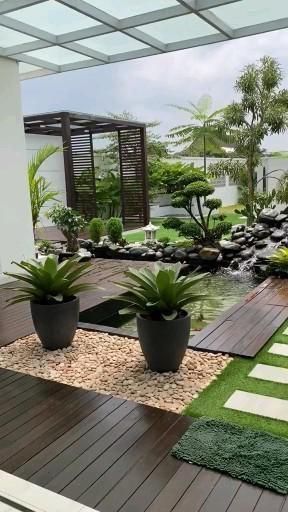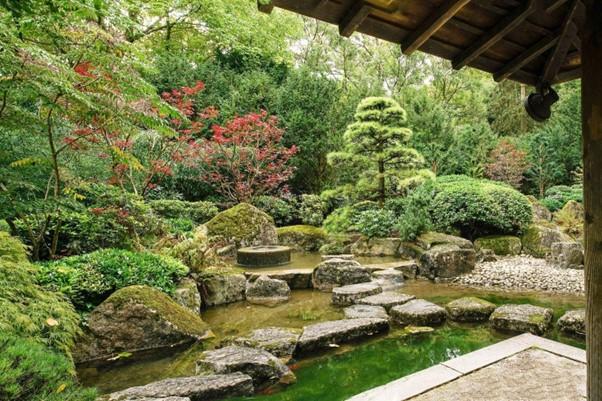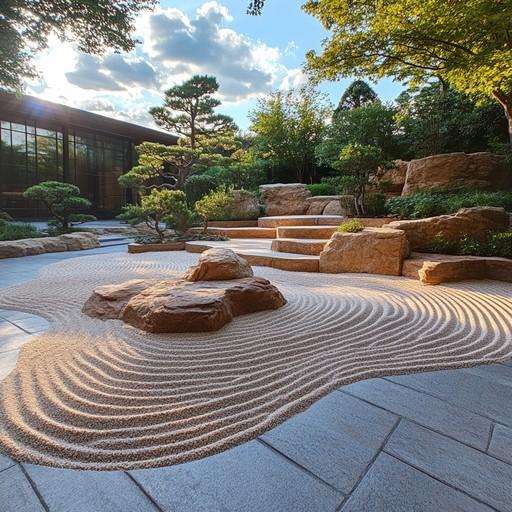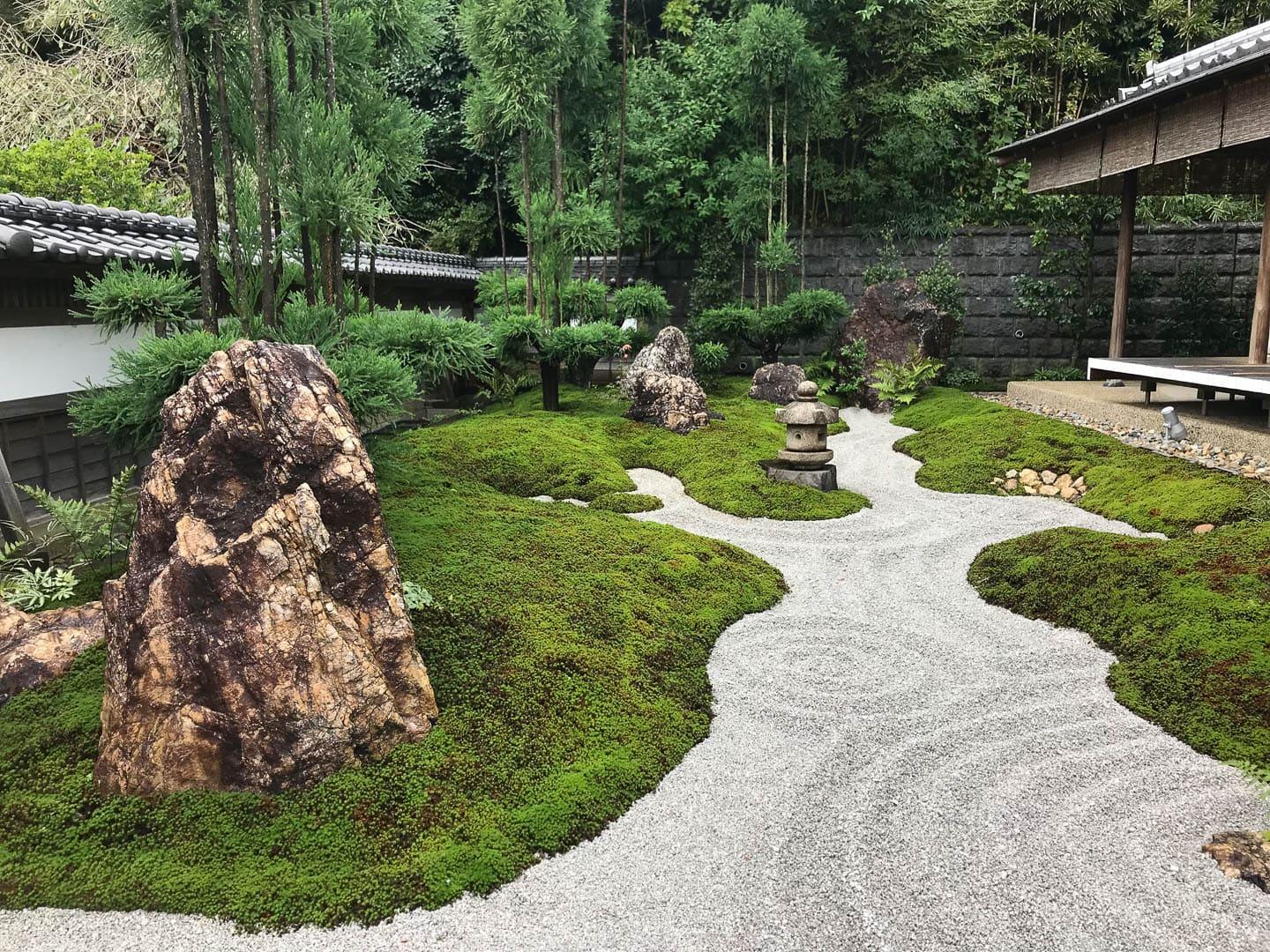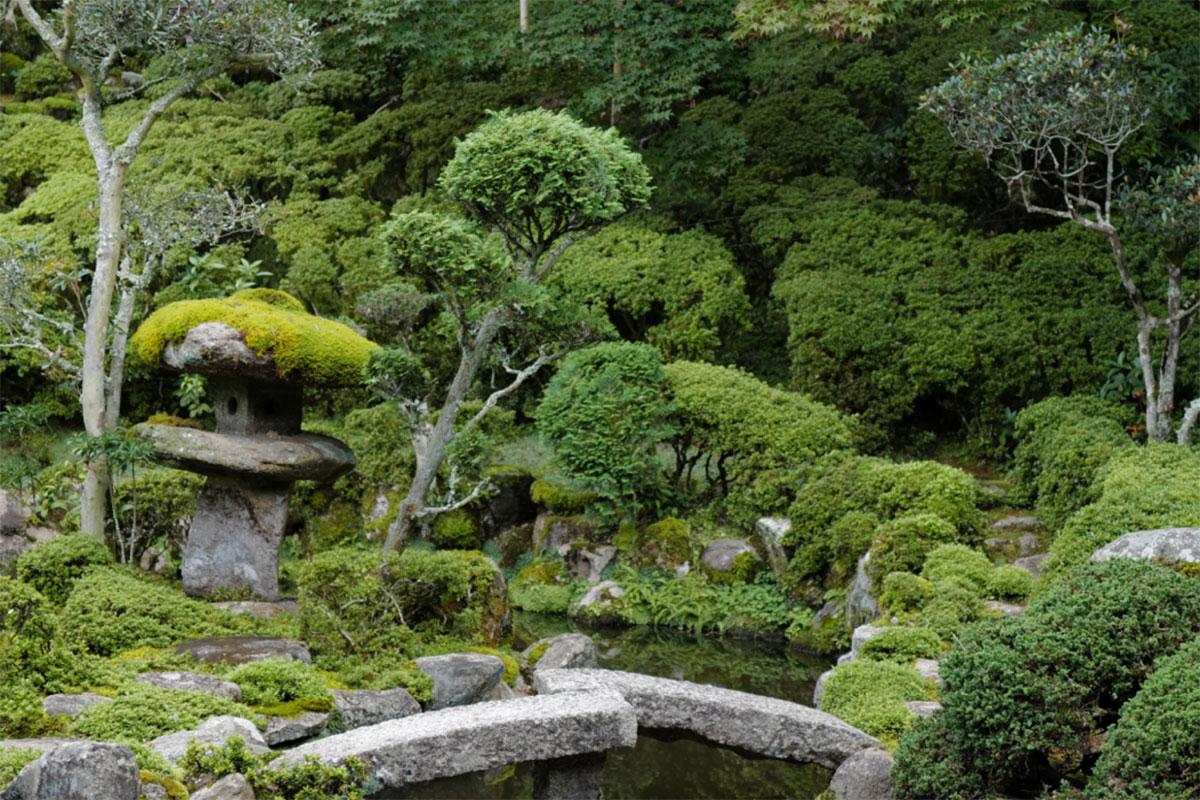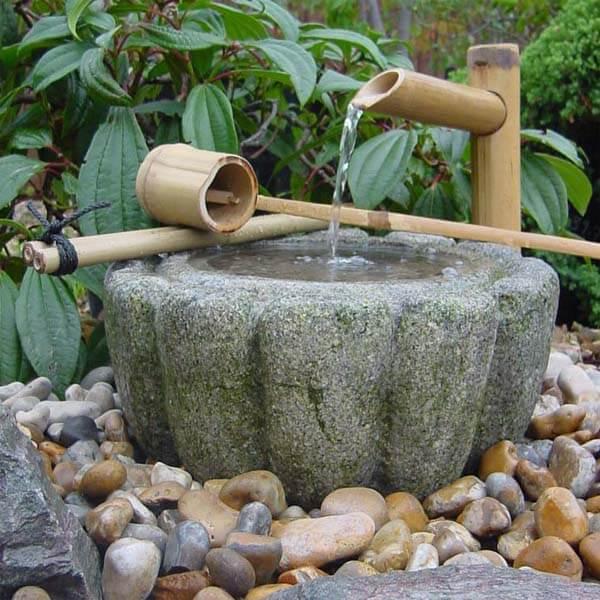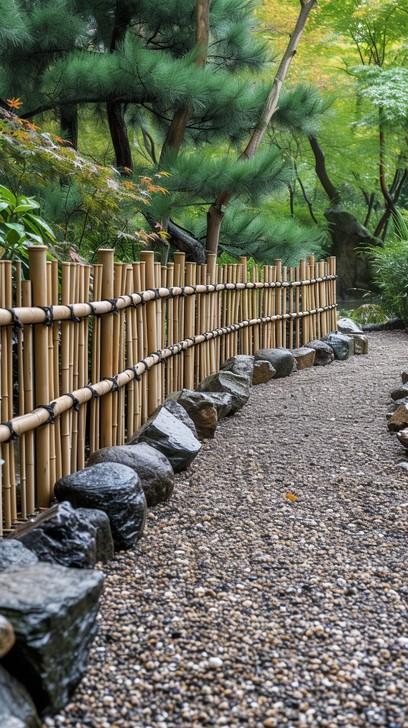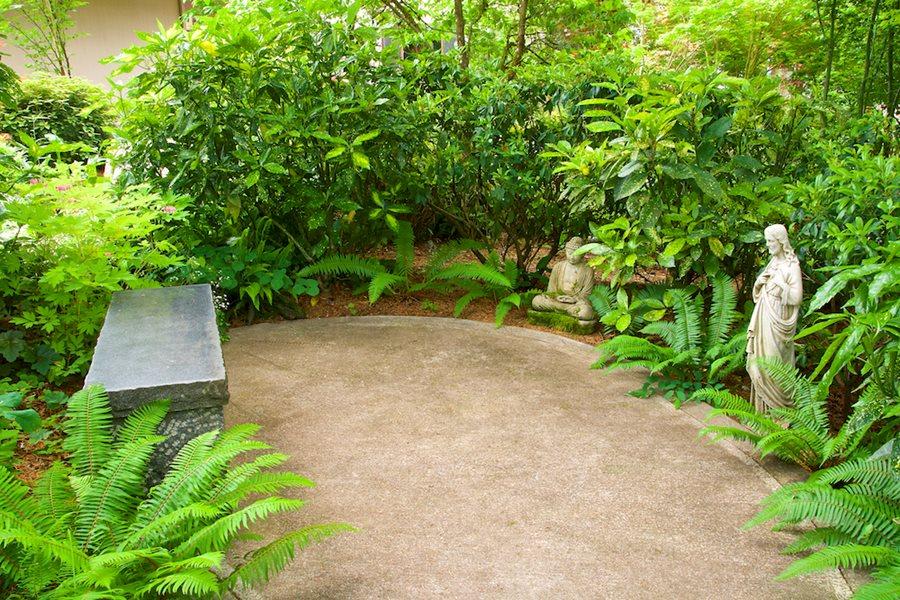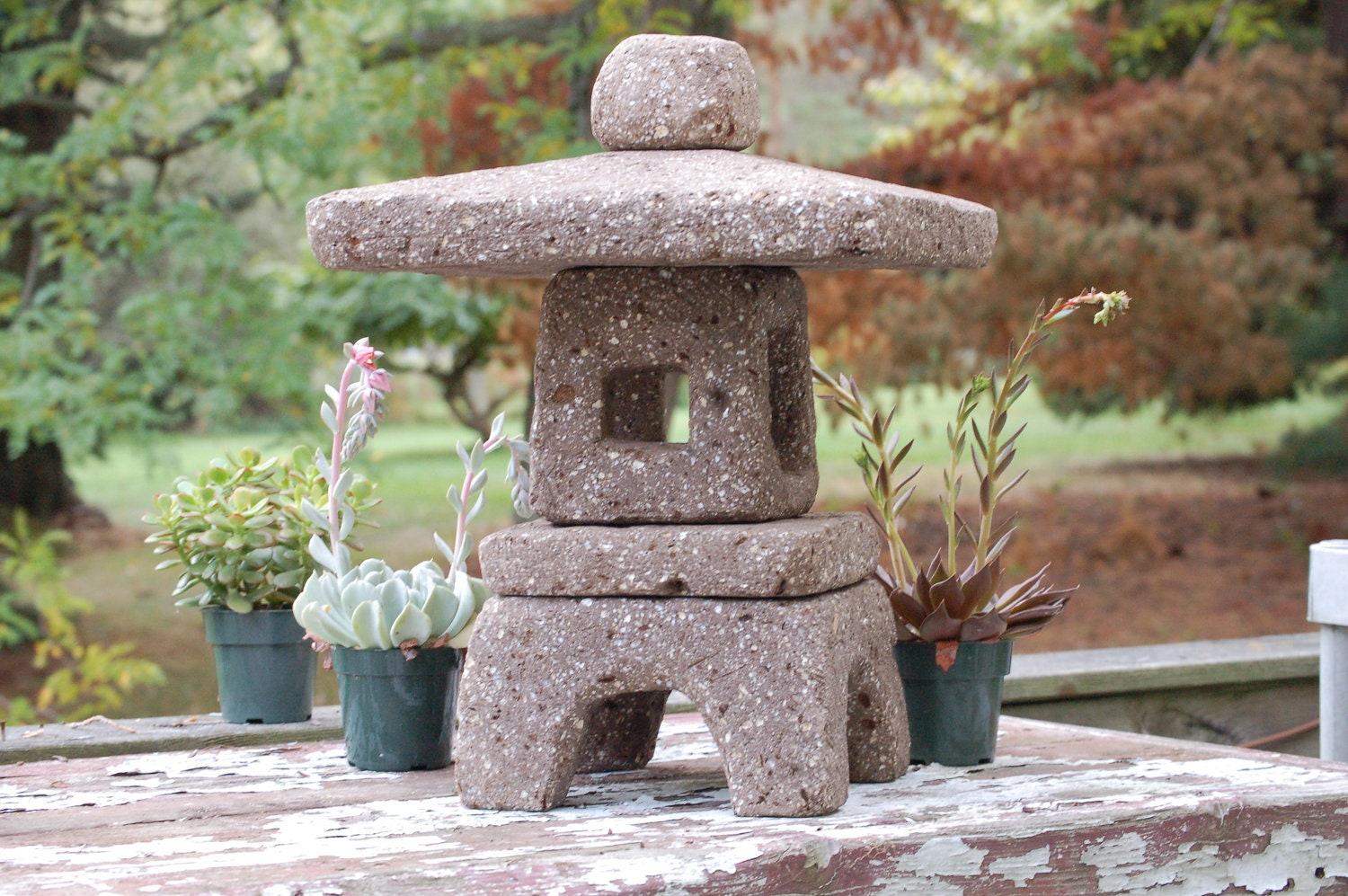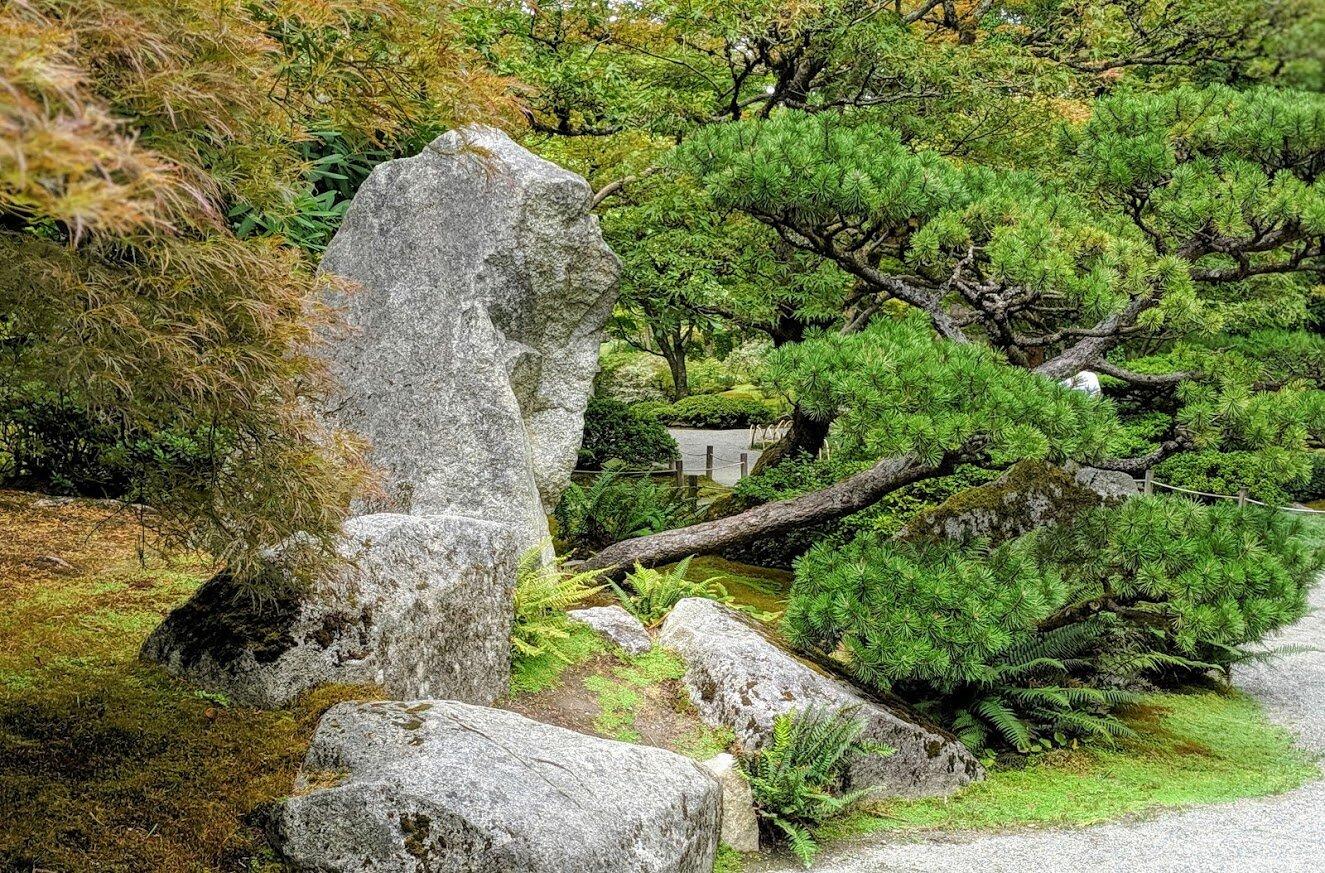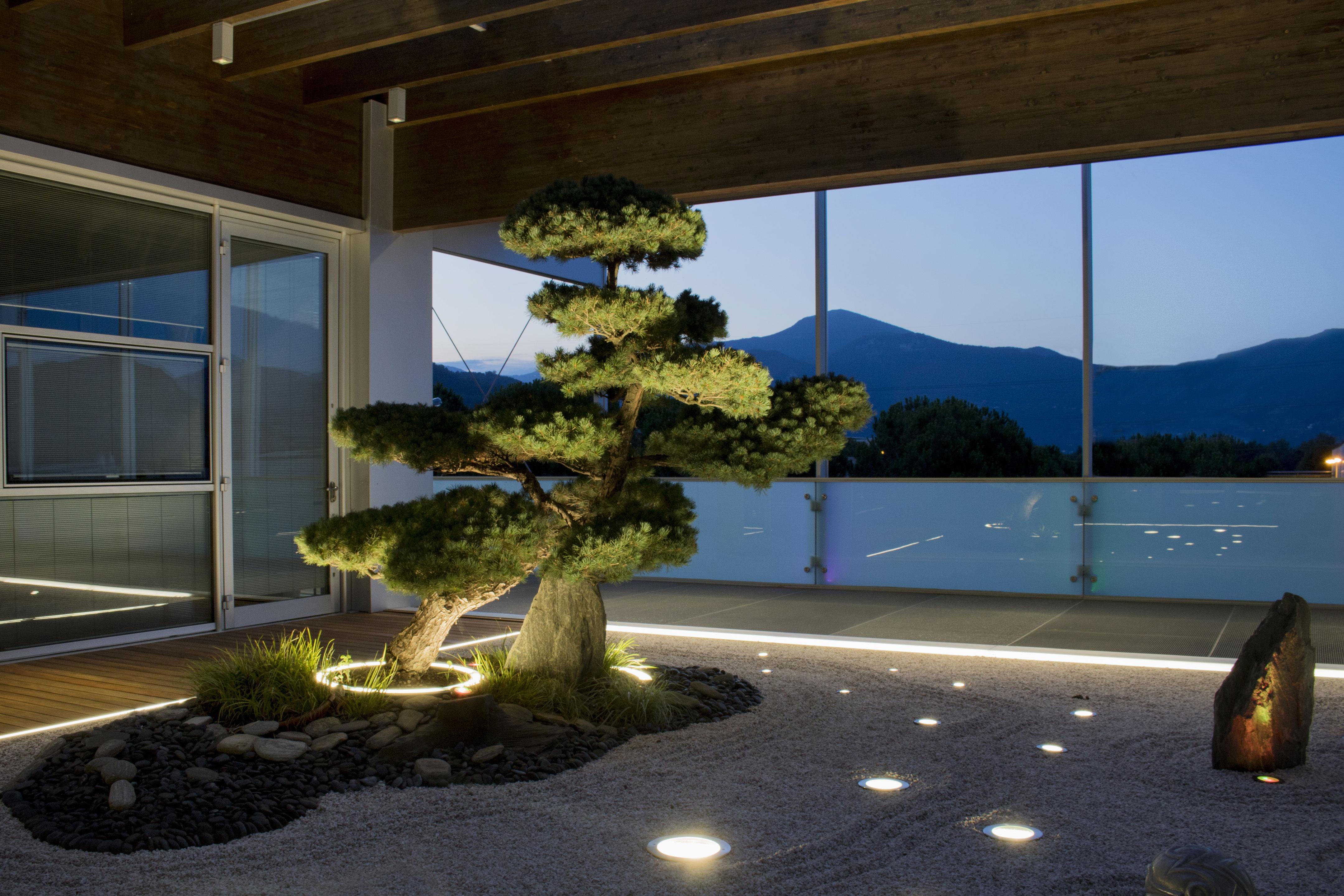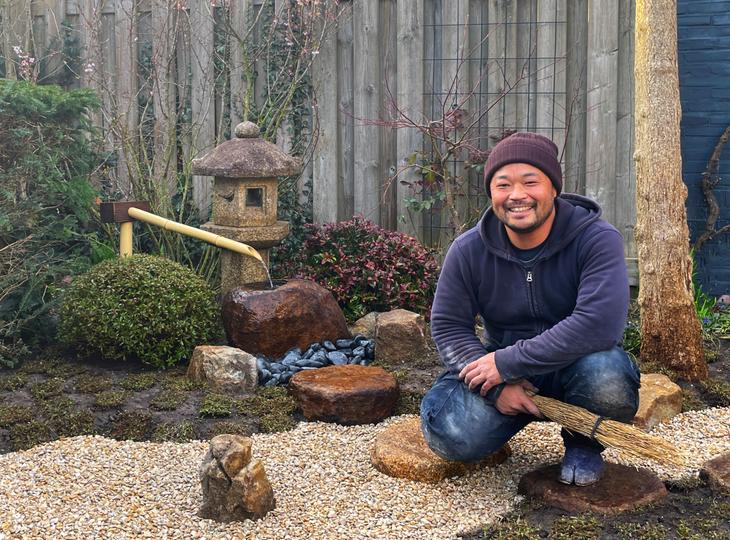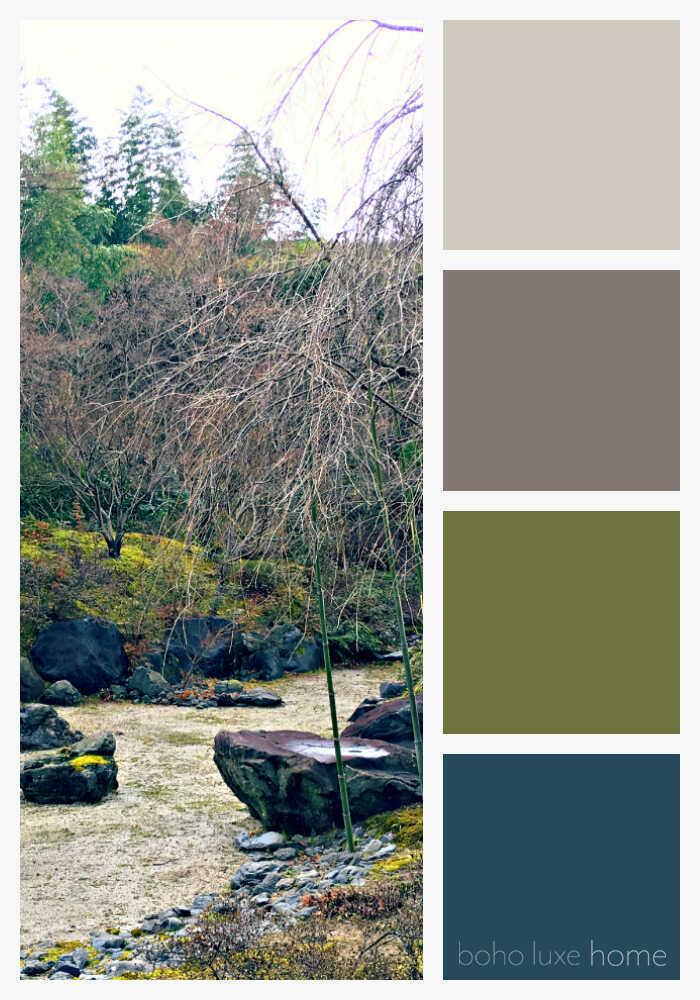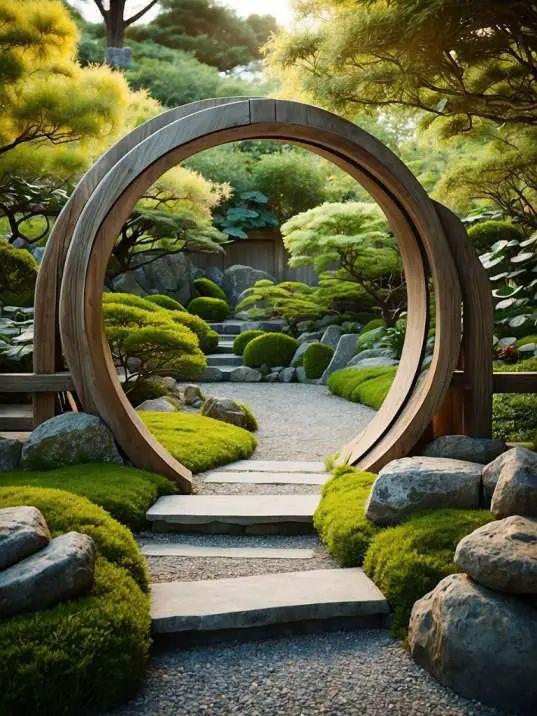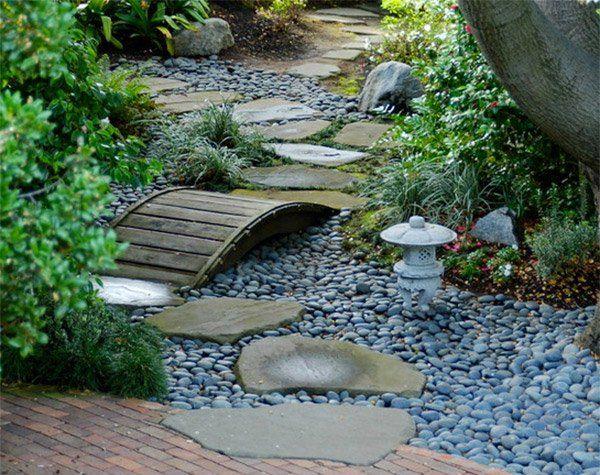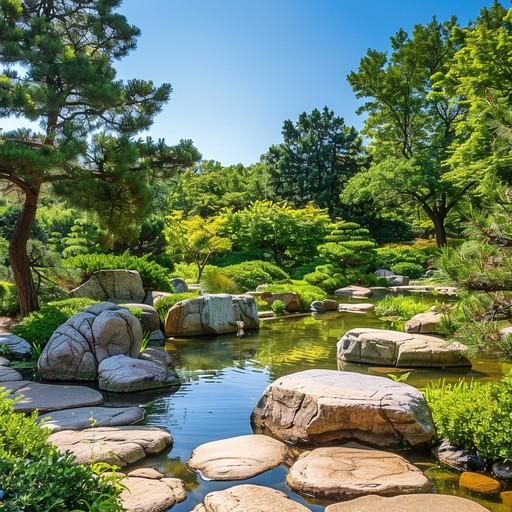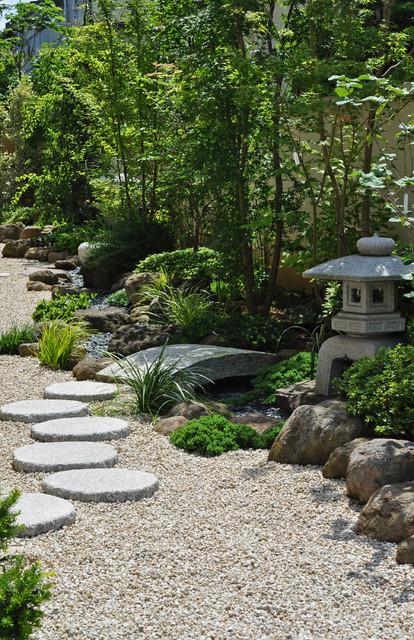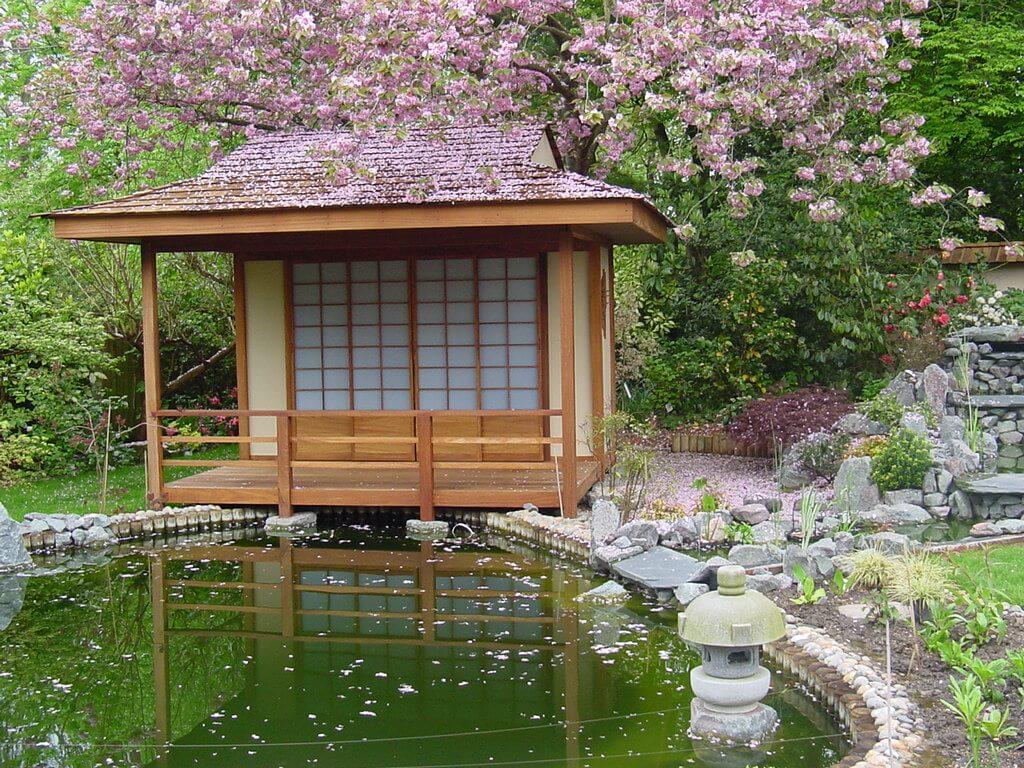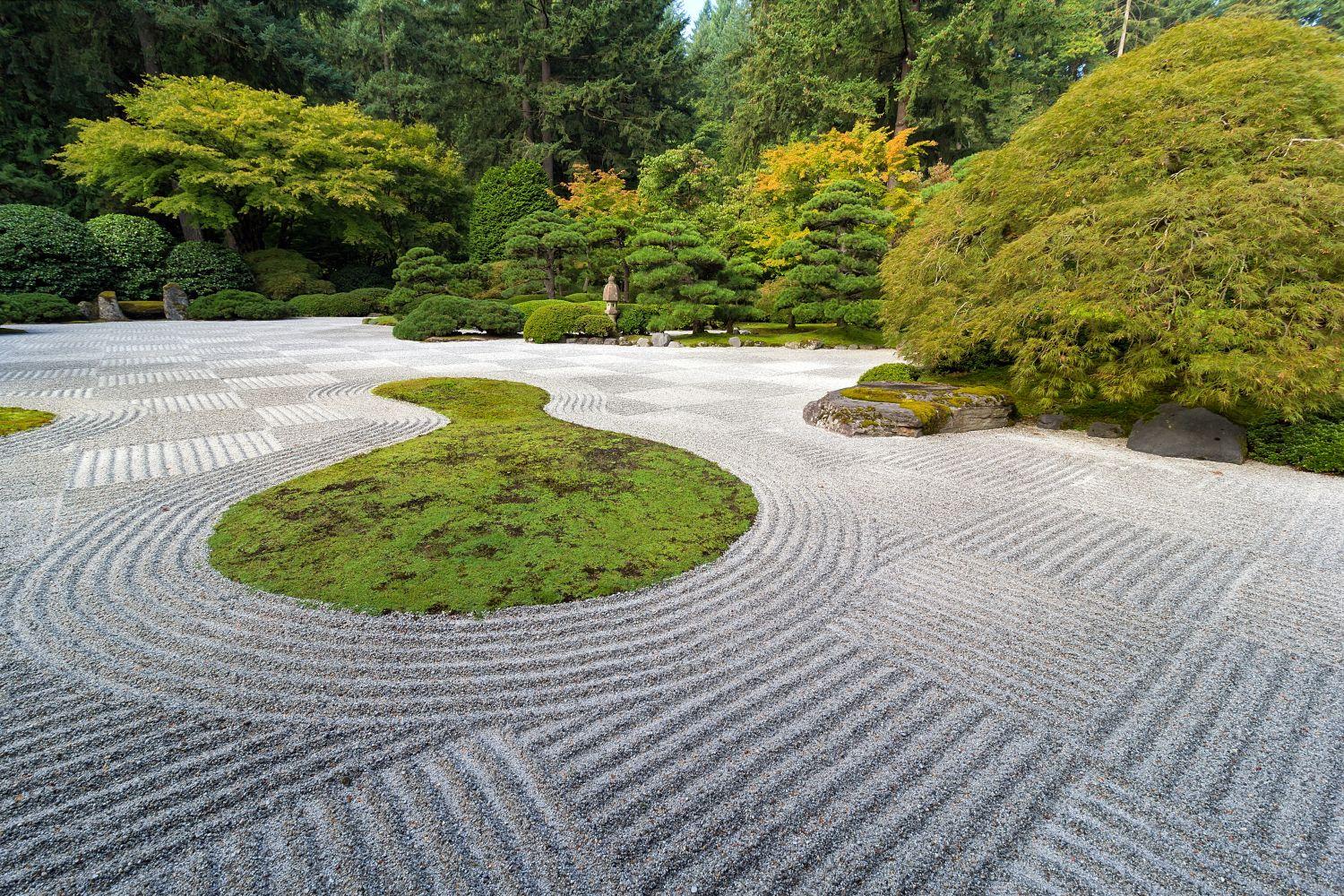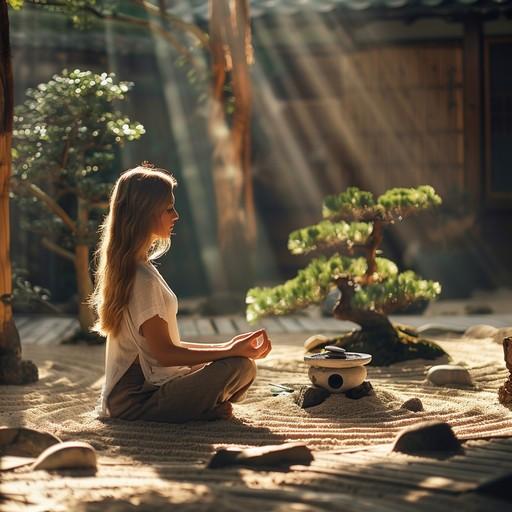Welcome to Your Serene Sanctuary:
In today’s fast-paced world, finding a moment of tranquility can feel like a lofty goal. Yet, with the right elements in place, you can transform any outdoor space into a serene retreat that promotes mindfulness and relaxation. This listicle explores 24 essential components that will help you design your perfect Zen garden oasis. From the calming presence of water features to the intricate artistry of stone arrangements, each element plays a vital role in cultivating a peaceful atmosphere. Whether you’re looking to rejuvenate your spirit, enhance your mindfulness practices, or simply create a beautiful landscape to unwind in, you’ll find inspiration and practical tips here that will guide you on your journey. Prepare to delve into the art of Zen gardening and discover how you can harmoniously connect with nature in your own backyard sanctuary!
Select a serene location for your Zen Garden, away from distractions
To cultivate a true haven for reflection and peace, it’s essential to choose a tranquil setting that encourages relaxation. Look for a spot in your garden or yard that is shielded from the chaos of daily life. Ideally, this area should be surrounded by lush greenery or perhaps a gentle water feature, providing a natural sound barrier that isolates you from external distractions. Consider the following elements when selecting your location:
- Proximity to Nature: Being close to trees, flowers, and wildlife can enhance the calming atmosphere.
- Sunlight vs. Shade: A balance between sun and shade allows for a comfortable meditative experience at different times of the day.
- Viewpoints: Identify spots that offer serene views, where you can sit and enjoy the beauty of the surroundings.
- Accessibility: Ensure the chosen location is easy to access, making it convenient for regular visits.
Once you locate the perfect spot, it’s time to refine the space to foster a sense of peace. Eliminate any elements that may disrupt your tranquility, such as noise from busy roads or visible distractions like cluttered areas. Incorporating natural boundaries such as bushes or low fencing can create an enclosed, intimate atmosphere. You can also use elements like boulders or sand to define the space further. To inspire you, we recommend exploring additional resources about garden design at Gardenista.
Choose smooth, natural stones to symbolize balance and tranquility in your Zen Garden
Incorporating smooth, natural stones into your Zen Garden design not only enhances its aesthetic appeal but also promotes a sense of harmony and peace. These carefully chosen pebbles and stones can serve as grounding elements that embody balance within the space. Consider using river stones, polished granite, or field stones to create pathways or focal points, each representing nature’s tranquility. The tactile quality of these stones encourages interactions, whether through a meditative walk or by simply allowing your fingers to glide over their surfaces, fostering a deep connection to the environment.
Select stones with organic shapes and subdued colors to maintain a soothing atmosphere throughout the garden. Here are some popular options:
- River stones: Smooth, rounded, and available in a variety of sizes.
- Limestone: Light-colored, capable of blending perfectly with greenery.
- Basalt: Dark, dense stones that add depth and contrast.
- Jade pebbles: For a pop of color, representing purity and balance.
By arranging these stones mindfully, you can create visual balance and pathways that guide the eye and the spirit. Consider constructing a stone lantern or a simple Zen circle using larger stones to symbolize unity and the flow of energy. For more inspiration on natural stone selection, visit RockTex, a treasure trove of information on decorative stones.
Incorporate raked gravel to represent flowing water in your Zen Garden
One of the most captivating techniques for enhancing the tranquility of a Zen garden is to use raked gravel to simulate the gentle flow of water. By carefully arranging and raking gravel into undulating patterns, you create the illusion of a serene stream coursing through your oasis. This method not only adds visual interest but also invites mindfulness as you engage in the rhythmic motion of raking. Consider employing varying shades and sizes of gravel to represent different depths and currents, fostering a landscape that reflects the dynamic nature of water.
To achieve the most authentic effect, employ a few simple techniques when laying out your gravel patterns:
- Curved Lines: Use curved, flowing lines to mimic the natural flow of water; this invites a sense of movement.
- Ripple Effect: Create concentric circles around stones to represent ripples; this adds depth to your design.
- Texture Variety: Experiment with coarse and fine gravel; the contrast can resemble the varying textures of a waterway.
Utilizing raked gravel can transform your Zen garden into a meditative retreat that encourages reflection and serenity. Embrace this artistic expression and witness how the simple act of raking can turn into a meaningful practice. For more ideas and inspiration for designing your garden, visit The Spruce.
Plant native plants to enhance the natural beauty of your Zen Garden
- Colorful Flowers: Incorporate flowers that bloom during different seasons to ensure a continuous splash of color throughout the year. Native varieties such as coneflowers and black-eyed Susans not only enhance the visual appeal but also attract local pollinators.
- Textured Grasses: Incorporating ornamental grasses like switchgrass or little bluestem can add movement and softness to your garden space. They create natural focal points and provide a beautiful contrast to the more structured elements of a Zen Garden.
By choosing plants that naturally thrive in your region, you create an environment that feels cohesive and harmonious. Native plants require less maintenance as they are already adapted to the local soil and climate, allowing you to enjoy your garden without the constant need for watering or fertilization. The result is a low-stress space that embodies the essence of Zen.
Additionally, incorporating native plants contributes to biodiversity, supporting various forms of wildlife such as birds, bees, and butterflies. A simple search for native plants in your area can guide you in selecting the best options that not only capture the beauty of your surroundings but also promote a balanced ecosystem right in your peaceful retreat.
Add a calming water feature to promote relaxation in your Zen Garden
Incorporating a water feature into your Zen garden can serve as a soothing focal point, inviting tranquility and mindfulness. The gentle sound of flowing water has a remarkable ability to calm the mind and promote relaxation. Whether you opt for a small pond, a koi fish habitat, or a simple bamboo fountain, each choice can reflect serenity while adding aesthetic appeal. Consider designing your water feature with natural stones and pebbles to harmonize with the surrounding landscape, while also providing a space for the reflection of light and greenery.
When selecting your water feature, think about the visual elements and sound dynamics it will bring to your garden. The following types of water features can enhance the restful atmosphere of your space:
- Bamboo Fountain: Simple and elegant, these fountains create a gentle trickling sound.
- Pond with Fish: Koi or goldfish can introduce vibrant colors and movement.
- Waterfall: Cascading water adds a dynamic element and a symphony of soothing sounds.
- Bird Bath: Attracts winged visitors while providing a refreshing splash.
It’s essential to place your water feature in a way that it can be easily viewed and appreciated from different angles. Creating a small seating area nearby can encourage mindfulness and contemplation. To maintain the tranquility, consider using a filtration system that operates quietly, ensuring that the water remains clean without disturbing the peaceful ambiance of your garden. For more ideas on creating a beautiful outdoor sanctuary, explore Gardenia.
Use bamboo fencing to create a peaceful boundary for your Zen Garden
Creating a tranquil boundary around your Zen garden is essential for fostering a sense of serenity and contemplation. Bamboo fencing is an excellent choice, as it blends naturally with the elements and offers an organic feel that enhances the overall Zen aesthetic. Unlike traditional wooden fences, bamboo is lightweight and flexible, allowing you to curate your garden space in various shapes and sizes. Its natural colors can harmonize seamlessly with the greenery and colorful stones, providing a soothing visual experience.
Beyond aesthetics, bamboo fencing serves practical purposes as well. It can act as a windbreak, helping to shield delicate plants from harsh winds, while also providing a sense of privacy for deeper introspection. You can even consider adding a gate or entrance made from bamboo, inviting visitors into your peaceful retreat. The natural texture of bamboo creates a calming sound when rustled by the wind, enhancing your garden’s ambiance. For further inspiration and resources on bamboo fencing options, explore bamboo.com to find ideas that resonate with your garden vision.
Arrange seating areas for meditation and contemplation in your Zen Garden
Creating a serene atmosphere for meditation and contemplation is essential in your Zen garden oasis. Begin by choosing comfortable seating options that blend with the natural surroundings. Consider options like a simple bamboo bench, which offers both simplicity and elegance, or a sitting stone carved for comfort. If you prefer a more cushioned approach, opt for outdoor meditation cushions in earthy tones. The aim is to choose seating that invites you to stay awhile, encouraging deeper reflections as you connect with nature.
Next, think about locations for your seating areas that might offer inspired views and tranquil sounds. Position your seating near vibrant flora, a softly trickling water feature, or a gently swaying bamboo grove to create a focal point for your serene moments. It could also be advantageous to incorporate pergolas or trellises draped with climbing plants to shield your area from direct sunlight, balancing warmth and comfort. For a deeper experience, consider creating a meditative path leading to these seating points, enhancing the journey toward peaceful contemplation.
| Seating Options | Features |
|---|---|
| Bamboo Bench | Durable, natural look, blends with garden |
| Sitting Stone | Longevity, unique texture, offers stability |
| Meditation Cushions | Soft, portable, comes in various colors |
| Pergolas | Provides shade, supports climbing plants |
For more inspiration on creating timeless meditation spaces, visit gardenia.net.
Include symbolic ornaments like lanterns to elevate the ambiance of your Zen Garden
Enhancing the tranquil atmosphere of your Zen garden can be elegantly achieved through the use of symbolic ornaments such as lanterns. These beautiful elements not only add visual appeal but also serve a deeper purpose, often representing enlightenment and guidance. Whether they are traditional stone lanterns or modern designs, incorporating these ornaments allows you to create focal points that draw the eye and inspire meditation. Consider placing them along pathways, near water features, or even as standalone pieces amidst greenery for a harmonious effect.
Opt for lanterns with soft lighting that casts gentle shadows, creating a soothing ambiance as dusk falls. We can categorize lanterns by style to fit the aesthetic of your Zen garden perfectly. Think about materials like stone, bronze, or even glass; each offers a unique character and can complement your surrounding elements. To inspire your choices, consider the following attributes:
| Lantern Style | Material | Symbolism |
|---|---|---|
| Chinese Lanterns | Paper & Bamboo | Harmony and Peace |
| Japanese Stone Lanterns | Granite | Guidance and Safety |
| Modern LED Lanterns | Glass & Steel | Innovation and Balance |
As you select your lanterns, also consider how their placement creates conversations between the light and the shadows within your garden. Embrace the yin and yang of illumination as softer lights harmonize with the serene surroundings. To explore more ideas, visit The Spruce for in-depth insights on lantern styles and placement techniques that can further enhance your outdoor sanctuary.
Design pathways that invite exploration throughout your Zen Garden
Create meandering pathways in your Zen garden that guide visitors through a serene journey of discovery. Consider using natural materials such as stepping stones, gravel, or wood chips to build these paths. Incorporate gentle curves that mimic the flow of nature, encouraging a slower pace and contemplative movement. You might even choose to flank your paths with ornamental grasses or low-growing plants, which not only soften the edges but also enhance the feeling of tranquility and invite exploration.
Adding wayfinding elements can elevate the experience further. Place strategically designed lanterns or bamboo markers along the way to light the path and create focal points that draw the eye. Integrating water features, such as small bubbling fountains or koi ponds, along the path can provide auditory stimulation, inviting visitors to pause and reflect. To fully embrace the experience, consider using colorful foliage to delineate sections of the garden, marking them with plants that change with the seasons, thus offering a new spectacle with every visit. For more ideas, check out Garden Design for inspiring layouts and themes.
Integrate diverse textures to create visual interest in your Zen Garden
To evoke serenity and balance in your Zen garden, embracing a variety of textures can transform the space into a captivating sensory experience. Consider layering smooth stones, rough bark, and soft moss to create a dynamic visual landscape. Incorporating fine gravel alongside larger rocks introduces differentiation while gently guiding the eye through the garden. By adding elements like succulents, with their unique shapes and subtle colors, you invite an element of intrigue that invites closer exploration.
Moreover, think about integrating natural materials such as bamboo, sand, and wood to enhance the tactile appeal of your space. Each element contributes its own story, whether it’s the sturdiness of a wooden bench, the delicacy of drifting sand, or the robustness of a stone lantern. Utilize a harmonious color palette to ensure the textures work together, creating a cohesive look without overwhelming the senses. Using a balance of light and dark tones can also enhance depth, drawing attention to different textures within your tranquil sanctuary. For those seeking more inspiration, explore JapaneseGardening.org for diverse ideas on texture integration in Zen gardens.
Select a focal point, like a stone sculpture, to draw attention in your Zen Garden
Selecting a focal point for your Zen Garden transforms it into a serene retreat, encouraging visitors to engage with its beauty. A stone sculpture is an exceptional choice, as its natural elements and textures create a contrast to the surrounding soft raked gravel and lush greenery. Consider integrating a Buddha statue, which can evoke a feeling of peace and mindfulness, inviting meditation and contemplation. Other options include intricate pagodas, guardian lions, or worn stones that lend an air of antiquity.
To enhance the visual impact, place your sculpture strategically within the landscape. Ensure it draws the eye without overwhelming the space. Position it amidst a carefully curated array of zen stones or surrounded by lush foliage that highlights its beauty. You can also consider using a minimalist approach by incorporating a simple stone slab to showcase the sculpture more effectively. Remember that the harmony of elements is vital; thus, integrating your chosen focal point into the overall design creates a seamless flow of tranquility. For inspiration, check out Architectural Digest for gallery ideas on sculptural elements in Zen Gardens.
Embrace minimalist design principles for a clutter-free Zen Garden experience
Creating a Zen garden is all about embracing simplicity, so start by minimizing distractions. Instead of overcrowding the space with numerous elements, focus on a few key features that evoke a sense of calm and serenity. This could include a single water feature, such as a small pond or fountain, which not only brings a soothing sound but also serves as a focal point. Pair this with clean lines and geometric patterns in the raked sand or gravel to encourage mindfulness and contemplation. Choose natural materials like stones and bamboo to enhance the harmonious feeling while ensuring each piece you incorporate serves a purpose.
Consider designing your space with intention. For example, create sections in your garden where each area represents different aspects of Zen philosophy, such as tranquility, balance, and simplicity. Use benches or stepping stones sparingly and select only those that complement the surrounding elements. A small table can also be included to hold a tea set, inviting introspection or quiet reflection. Lastly, ensuring that your garden can be easily maintained will keep it looking pristine and clutter-free, allowing you to fully embrace the meditative experience. For more inspiration on minimalist landscaping, check out Architectural Digest.
Opt for soft, ambient lighting for your Zen Garden during evening hours
To create a serene atmosphere in your Zen Garden as the sun sets, consider utilizing soft and ambient lighting. This kind of illumination not only enhances the beauty of your garden but also promotes relaxation and mindfulness. By opting for fixtures that emit a warm, gentle glow, you encourage a tranquil environment, perfect for meditation or quiet reflection. You can achieve this effect through various lighting options, such as:
- Solar Lanterns: These eco-friendly options absorb sunlight during the day and softly illuminate your space at night.
- String Lights: Drape them over trees or along pathways to create a whimsical ambiance.
- Candlelit Holders: Incorporate flickering candles in ornate holders to add a touch of romance and warmth.
In addition to the types of lighting, pay attention to the placement. Strategically position lights to highlight specific elements such as rocks, water features, or plant arrangements. This practice not only draws attention to these focal points but also shapes the overall mood of your garden. For a cohesive and harmonious effect, consider using a combination of the following techniques:
| Technique | Description |
|---|---|
| Path lighting | Illuminate pathways with soft lights to guide you gently through the garden. |
| Spotlighting | Focus on favorite plants or sculptures to create dramatic silhouettes. |
| Underwater Lights | If your garden has water features, use underwater lights to transform them into shimmering havens. |
Investing in quality lighting not only enhances the aesthetic quality of your garden but also invites you to linger longer in this peaceful retreat. For more inspiration on designing your outdoor space, explore resources at Garden Design.
Regularly prune plants to maintain the uncluttered aesthetic of your Zen Garden
To achieve the serene and uncluttered aesthetic characteristic of Zen gardens, regular pruning is essential. This practice not only promotes the health of your plants but also enhances the overall visual harmony of your space. When selecting which plants to prune, consider the silhouette and structure of each one. By eliminating excess foliage, you allow the remaining shapes to breathe and reveal their natural beauty. Aim to trim away dead or overgrown branches, while also shaping the plants in a way that complements the surrounding elements—such as rocks and gravel.
Establish a seasonal pruning schedule to keep your garden’s aesthetics in line with the changing seasons. This regular maintenance can significantly impact the atmosphere of your oasis. Consider using a simple table to track which plants require attention during each month:
| Month | Plants to Prune |
|---|---|
| January | Evergreens, Maple |
| March | Flowering Shrubs |
| July | Perennials, Grasses |
| September | Late Bloomers, Foliage Plants |
The beauty of regularly pruning your plants lies in the clarity it brings to your Zen garden. For expert tips on pruning techniques, visit The Spruce to deepen your understanding and refine your garden’s tranquility.
Choose a harmonious color palette to enhance the overall tranquility of your Zen Garden
Creating a space that embodies peace starts with selecting a harmonious color palette that resonates with the surrounding environment. For a calming effect, consider using shades inspired by nature. Incorporate soft greens, earthy browns, and gentle blues, which can foster a sense of tranquility. Additionally, introducing touches of warm neutrals can soften the visual impact, allowing your eyes to rest. Think about employing the subtle contrasts found in seasonal changes—spring blossoms or autumn leaves—to bring a dynamic yet peaceful visual experience.
To help you with your decision, you can visualize your color choices with the following table featuring suggested palettes and their emotional effects:
| Color Palette | Emotional Effect |
|---|---|
| Soft Green & Cream | Peaceful & Fresh |
| Earthy Brown & Sky Blue | Grounding & Soothing |
| Soft Lavender & Sand | Calming & Serene |
Moreover, consider incorporating natural materials that align with your color choices. For instance, stones, pebbles, or smooth river rocks in varying shades can serve as decorative elements that complement your color palette. Not only will these elements enhance the aesthetic, but they will also promote a sense of balance and harmony throughout your garden. Explore various color inspirations on sites like Adobe Color, where you can find palettes created by others or create your own to perfectly match your Zen Garden vision.
Incorporate sculptures that reflect natures beauty within your Zen Garden
Enhancing your Zen garden with sculptures that embody the essence of nature can elevate the tranquility and aesthetic appeal of your oasis. Opt for pieces that not only align with the overall theme but also resonate with the beauty found in the natural world. Some ideas to consider include stone lanterns that mimic the organic forms of rocks, or wooden carvings that reflect the intricate patterns of tree bark. Consider sculptures that symbolize elements like water, earth, or wind, such as curved metal shapes suggesting flowing streams or organic shapes that evoke the feeling of a gentle breeze. Each piece should serve as a reminder of the harmony and balance integral to any Zen environment.
Incorporate a variety of materials and textures to create depth and interest in your garden. You could include ceramic animal figures that blend seamlessly with the plant life, or bronze sculptures that age gracefully and develop a patina over time, echoing the inevitability of nature’s cycles. By mixing different styles, such as traditional Buddhist statues alongside contemporary art pieces, you can create a conversation between the past and the present. Use focal sculptures strategically positioned in areas that catch the eye, creating a natural flow that invites visitors to explore every corner of your garden. For more inspiration, visit designboom.com.
Utilize wind chimes to introduce soothing sounds into your Zen Garden
Incorporating wind chimes into your Zen garden can enhance the sensory experience, inviting a gentle symphony of sounds that complements the serene visual aspects of your space. The soft tinkling of chimes can evoke feelings of peace and calm, transforming your garden into a sanctuary for reflection and relaxation. Positioning chimes near tranquil features such as a pond, rock arrangement, or sitting area can create a harmonious atmosphere. Consider experimenting with various styles, sizes, and materials—bamboo, metal, or even glass chimes can each produce unique auditory experiences that cater to your personal taste.
When selecting your wind chimes, think about their placement and how they interact with the elements around them. Create a deliberate layout by aligning several chimes to form a gentle breeze pathway, or cluster smaller chimes together for a layered sound effect. The following table outlines a few popular types of wind chimes and the unique qualities they bring:
| Type of Wind Chime | Material | Sound Characteristic |
|---|---|---|
| Bamboo Chimes | Bamboo | Soft, mellow tones |
| Metal Chimes | Aluminum | Bright, resonant sounds |
| Glass Chimes | Glass | Delicate, tinkling melodies |
As you design your garden, consider adding a wind chime as a focal point that encourages mindfulness. Let the soothing sounds guide your meditation or yoga sessions, allowing the chimes to act as a gentle reminder to stay present in the moment. For more insights on how to choose and personalize wind chimes for your tranquil retreat, visit thefreedictionary.com.
Install a small bridge over pebbled paths as a charming addition to your Zen Garden
Adding a small bridge over your pebbled paths can transform routine strolls into delightful journeys through your Zen Garden. This charming architectural feature fosters a sense of exploration and tranquility, inviting you to walk freely and immerse yourself in nature. Consider using materials that complement the natural elements of your garden, such as bamboo or weathered wood. A curved bridge, reminiscent of classic Japanese designs, can enhance the feeling of fluidity and harmony, bridging the physical landscape while symbolizing the connection between the earthly and spiritual realms.
When designing your bridge, remember the importance of keeping it simple and elegant. Here are a few tips to consider:
- Size Matters: Keep proportions small to maintain a cozy feel in your garden.
- Natural Colors: Use colors that blend seamlessly with your garden’s palette.
- Placement: Position the bridge to create a focal point or to connect distinct areas, encouraging mindfulness during your walks.
- Lighting: If possible, incorporate soft lighting beneath or around the bridge to create a magical ambiance at dusk.
Additionally, you can enhance the area surrounding your bridge with river stones and soft foliage, creating a serene bank environment that encourages meditation or quiet reflection. These elements will work harmoniously to elevate the peaceful essence of your Zen Garden, making it a true sanctuary. For inspiration on bridge designs, visit houzz.com.
Use mirrors strategically to create an illusion of space in your Zen Garden
Incorporating mirrors into your Zen garden can dramatically enhance the sense of space and tranquility. By placing mirrors in strategic locations, you can create a feeling of depth, making your garden appear larger and more expansive than it truly is. Consider these options for mirror placement:
- Reflecting a focal point: Position a mirror opposite your favorite feature, such as a water fountain or a stone sculpture. This not only doubles the visual appeal but also invites more natural light into the space.
- Boundary illusions: Install mirrors along garden edges to trick the eye into believing that the garden stretches beyond its actual perimeter, providing a serene feeling of infinity.
- Vertical mirrors: Use tall, narrow mirrors on fences or walls to create an upward reflection that draws the eye towards the sky, evoking a connection to nature.
When selecting a mirror, opt for something framed in a natural material to blend seamlessly with your surroundings. Whether it is a rustic wood frame or a minimalist bamboo design, these elements can enhance the organic feel of the space. Experiment with mirror shapes as well; round mirrors can soften the overall aesthetic, while geometric shapes introduce a modern touch. Essential to this design concept is ensuring that mirrors are strategically positioned for optimal reflections without distorting the garden’s beauty. To learn more about using reflections in design, visit Houzz.
Add stepping stones to guide visitors through your Zen Gardens serene landscape
Stepping stones serve as more than just a practical pathway; they can transform your Zen garden into a serene journey of discovery. Choose natural materials like slate, granite, or river stones to enhance the organic feel of your garden. Strategically placed stepping stones can create a gentle flow, guiding visitors through different sections and inviting them to experience the tranquility of your landscape. Vary the size and shape of the stones, ensuring they are slightly irregular for an understated, natural aesthetic. This will not only add visual interest but also encourage mindfulness as visitors navigate their way through the garden.
When designing your stepping stone path, consider the alignment and spacing. Place stones with enough distance for comfortable walking while maintaining a sense of unity. Experiment with different patterns such as a linear path that leads to a focal point—a rock sculpture or a small meditation area. To enhance your garden’s beauty, you can intersperse the stones with lush moss or small pebbles, creating an inviting contrast. Additionally, think about lighting options that softly illuminate the path, allowing visitors to explore your oasis even as dusk settles in. For more inspiration, look into natural landscaping ideas on websites such as gardendesign.com.
Create a Zen Garden journal to document your evolution and inspiration
Creating a Zen Garden journal allows you to delve deeper into your own journey of inspiration and mindfulness. Begin by dedicating a specific notebook or digital format for this purpose. In your journal, include personal reflections on your garden’s formation, the choices behind each element, and what they symbolize for you. Document your thoughts and feelings as you engage with your garden, perhaps while raking the gravel or arranging stones. This practice will not only enhance your connection to your Zen space but will also serve as an evolving archive of insights and personal growth.
Enhance your journal’s experience by adding visual components. Consider incorporating sketches of your garden layout, or photographs capturing its various stages throughout the seasons. You can also create mood boards with images that inspire your vision or fragments of nature that resonate with your Zen philosophy. To further enrich your entries, include quotes or passages that speak to you, perhaps from books on mindfulness or nature therapy. For more inspiration on documenting your garden journey and enhancing creativity, visit Mindful.org.
Incorporate traditional elements like a tea house to enhance your Zen Garden’s authenticity
Introducing a tea house to your Zen garden can significantly amplify its authenticity and allure. This traditional Japanese structure not only serves as a serene spot for reflection but also pays homage to the cultural practices surrounding tea ceremonies. Picture a quaint, wooden tea house nestled among lush greenery, with sliding shoji doors that open to incredible views of meticulously raked gravel and artfully placed stones. The tranquil atmosphere promotes mindfulness, allowing visitors to truly engage with the serene environment. Here are some essential traits to consider for your tea house:
- Natural Materials: Utilize wood, bamboo, and paper for an authentic feel.
- Simplicity in Design: Keep the lines clean and avoid excessive decoration.
- Seamless Integration: Position the tea house so it blends harmoniously with the surrounding landscape.
To further enhance the experience, consider incorporating elements like a koi pond or a pathway lined with stepping stones leading to the tea house. This inviting journey not only builds anticipation but also encourages thoughtful reflection on the way to herbal infusion. Complementing your garden with traditional lighting, such as lanterns, will provide a warm glow as dusk falls, urging visitors to linger. Explore how tea houses can bring together nature and culture at Japaneseteagardens.com to understand more about their enchanting role in garden design.
Allow nature to take its course for a more organic feel in your Zen Garden
Embracing the natural processes of your garden invites a sense of tranquility and mindfulness. This approach encourages the incorporation of elements that blend seamlessly with the environment, allowing for an organic aesthetic that evolves over time. Consider incorporating native plants that require minimal maintenance while offering beauty in their wild growth. Additionally, let the rocks and gravel settle naturally, allowing the terrain to dictate the layout you choose. The beauty of such unrefined elements adds to the garden’s character, creating a place where nature can showcase its artistry.
To further enhance the organic feel, think of incorporating features that invite wildlife into your sanctuary. Small water features or birdbaths can create focal points while promoting biodiversity. Instead of imposing order, let pathways meander gently, encouraging exploration and reflection. Use materials like uneven stones and reclaimed wood to make benches or borders that exude a sense of timelessness. Remember, every weed you don’t pull might invite a new visitor, be it a busy bee or a curious ladybug, enriching the Zen experience. For more insights on cultivating a nature-friendly garden, visit nwf.org.
Practice mindfulness while tending to your Zen Garden for ultimate relaxation
Creating a Zen garden offers an ideal opportunity to practice mindfulness as you immerse yourself in the calming elements surrounding you. Begin by engaging your senses while you rake the gravel or sand, allowing your thoughts to settle. As you create patterns, focus on the motion of your hands and the sound the rake makes against the surface. This rhythmic action can heighten your awareness of the present moment, providing a meditative state that encourages relaxation. Use natural elements such as stones, moss, and carefully pruned plants to foster a harmonious environment that nurtures tranquility. The visual appeal of your garden can also create a sense of peace, inviting you to appreciate the beauty in simplicity.
Consider integrating a few mindfulness practices as you tend to your garden. Take the time to observe various elements—the colors, shapes, and textures around you. You can create a small gratitude journal nearby to jot down what you’re thankful for while cultivating your space. A dedicated area can serve as a meditation spot, where you sit in stillness, breathe deeply, and connect with nature. Whether it’s gazing at the gentle sway of plants or listening to the sounds of birds, being present will help you experience deeper relaxation and clarity. For more mindfulness techniques to enhance your gardening experience, visit mindful.org.
Final Thoughts
As we embark on our journey to create the perfect Zen garden oasis, we’ve explored 24 essential elements that harmonize nature and mindfulness. Each stone, plant, and pathway contributes to a serene landscape designed for reflection and tranquility. Remember, the beauty of a Zen garden lies not only in its aesthetic but also in the experience it offers.
Take your time, connect with the materials and the space around you. Whether you choose to cultivate a lush environment filled with vibrant flora or a minimalist layout that highlights simplicity, your garden will reflect your unique spirit and intentions.
As you begin your crafting journey, let your creativity flow and your thoughts settle. Embrace the process, and soon you will find yourself immersed in your personal sanctuary, a place where the chaos of the world fades away, leaving only the peace of the present moment. Happy gardening, and may your Zen oasis bring you harmony for years to come.
As an Amazon Associate I earn from qualifying purchases.
 decorafit.com Design ideas for your home and patio
decorafit.com Design ideas for your home and patio
